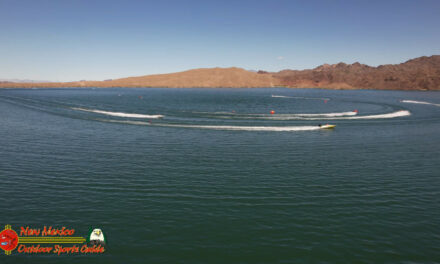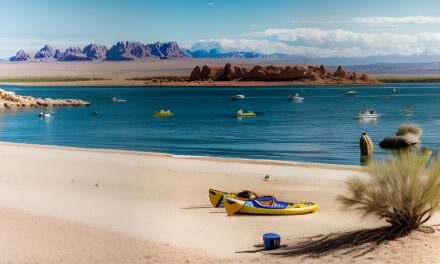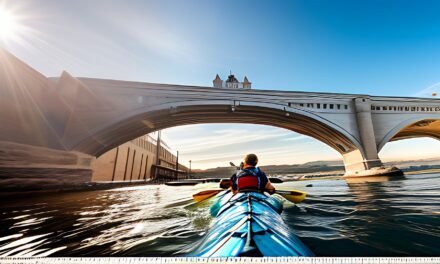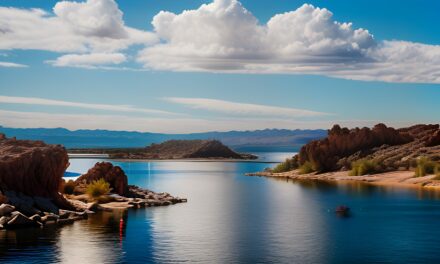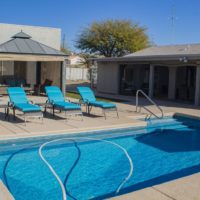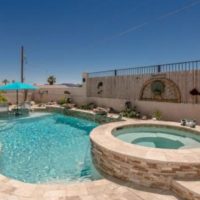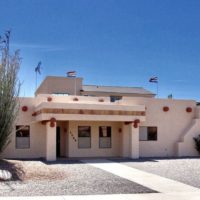Aquatic vegetation has been dubbed many names. Some curse it because their boat propellers or water skis get caught in it. Leonard Ranne of Texas Black Bass Unlimited calls it “the salvation of our fisheries.” Many anglers share his attitude, but the truth is that some aquatic plants can lead to poor water, and hence, poor fishing quality.
Dr. Michael Smart is an aquatic plant ecologist of the Lewisville Aquatic Ecosystem Research Facility (LAERF) located in Lewisville, Texas. He has been studying aquatic vegetation for 20 years.
LAERF is one of four satellite research facilities of the U. S. ArmyCorps of Engineers’ Waterways Experiment Station in Vicksburg, Mississippi. The research taking place at LAERF is of national significance; the scientists are working on a variety of aquatic plant questions from different parts of the country.
Dr. Smart says, “basically, there are good plants and bad plants.” Plants that grow below the water’s surface stabilize deposited sediments and clear the water. Shallow water systems where no plants grow fall victim to wind and turbulence, creating dark, turbid water that is undesirable for many species of fish.
Another benefit is that aquatic plants take nutrients like phosphorous out of the water, Dr. Smart says. Too much phosphorous in the water makes the water turn green with excessive growth of microscopic plants called algae. This condition, called an “algae bloom,” means there are too many nutrients in the water. Algae blooms can deplete levels of dissolved oxygen, sometimes resulting in fish kills.
Native aquatic vegetation also increases the water quality by reducing the water’s flow and increasing sedimentation, says Dr. Smart.
Aquatic plants provide habitat for aquatic insects and other invertebrates that fish feed on. They also provide habitat and food for waterfowl. Any sportsman worth his salt knows that his prey will follow its food and can be caught where it feeds. Fish also use underwater plants for shelter from predators.
Examples of “good” plants are all native species. Wildcelery is one of those plants. Dr. Robert Doyle, a research scientist of the University of North Texas who is conducting research at LAERF, says “we’ve really been impressed with this plant because it clears the water column, it provides food and shelter for aquatic life and growth is usually below the water’s surface so it doesn’t interfere with our use of the water resource.”
Another plant that the scientists at LAERF like is muskgrass. Dr. Smart says, “muskgrass stabilizes the sediment. It usually grows in a carpet and it clears the water column and provides food and shelter for aquatic life. This statement can be made of many native aquatic plants that we recommend for habitat enhancement.”
Hydrilla is what most often comes to mind when we think of aquatic weeds and it is the biggest culprit. Hydrilla is an exotic plant from China, brought over as a decorative plant species in aquariums. It has been found in Texas reservoirs since 1960. According to Bill Moore of the San Jacinto River Authority, it is a violation of the law to transport Hydrilla. Despite state and federal laws prohibiting the introduction of this plant, it is rapidly becoming the #1 problem in Texas lakes.
There have been reports of anglers deliberately planting Hydrilla in Texas lakes for “structure.” Their plan is to create a place for fish to eat and live so that they will be easier to find. Dr. Doyle stresses that this is not a long-term solution. This excessive growth of Hydrilla will damage the lakes almost irreparably and will cost taxpayers millions to eliminate.
Another plant that federal and state agencies are trying to control in area lakes is the waterhyacinth. This plant was brought over from Brazil as an ornamental plant in ponds around the turn of the century. It is a free-floating flowering plant with attractive buds, but it is historically the #1 aquatic weed problem in the world, according to Dr. John Madsen, a research biologist of LAERF. The waterhyacinth is another exotic plant that is illegal to transport, according to the San Jacinto River Authority.
To give you an idea of how seriously these plants can harm the environment, when the State of California finds Hydrilla growing in one of its lakes, it will immediately drain the lake and cover the affected area with concrete. On the opposite coast, Florida spends $8 million per year on the control of Hydrilla and $5 million per year on the control of waterhyacinth.
A third exotic plant that worries South Texas reservoir managers is waterlettuce. This plant also hails from South America and Dr. Madsen says it was “probably also brought over as an ornamental pond plant because it’s easy to grow and has an attractive leaf.” This plant has proven to be a problem in the entire state of Florida and all along the Gulf Coast.
Eurasian watermilfoil is a problem plant that affects primarily the northern states at this time. It has become a problem as farsouth as Tennessee, Kentucky, northern Alabama and North Texas. This plant was once the country’s #1 problem plant below the Mason-Dixon line.
The Eurasian watermilfoil is typically thought by scientists to come from Europe and western Asia and it was probably brought to the United States as an aquarium plant, just like Hydrilla.
All of these “bad” or exotic plants can completely cover the water’s surface in a canopy-like formation eliminating light below the surface and killing plants that grow beneath them.
A recent study performed by Dr. Smart and the others hoped to “provide a better understanding of the effects of aquatic plants on lake water quality.”
The researchers studied various factors and different species of both native and exotic plants. The results showed that “all aquatic plants exert certain influences on the aquatic environment by reducing water flows, changing flow patterns, increasing sedimentation, and altering chemical composition of the water.”
Dr. Smart says that Hydrilla, a canopy former, grows from the bottom of the lake to the water’s surface creating a “mat” that can be up to a foot thick. This mat, he says, prevents the movement of oxygen in the water leading to critically low levels of oxygen, especially in the early morning hours.
With the combined absence of oxygen and light below the surface, you end up with a single species of plant thriving in the water and low water quality, according to Dr. Smart. Waterhyacinth is the exotic plant that is blamed for restricting oxygen the most.
Surface mats also prevent the wind from mixing the water, so the water becomes stagnant and devoid of life.
All of these traits of exotic plants were cited as “contributing todegraded water quality conditions, although massive populations of any aquatic plant species, exotic or native, may cause diminished water quality and lowered oxygen availability,” says Dr. Smart and the others in their conclusions of the study.”
Another factor that contributes to the problems caused by exotic weeds is their rapid spread. Any little piece of Hydrilla stem can grow a new plant. Hydrilla also produces specialized stem buds called “turions” that fall off the plant in the fall and can spread the plant throughout the lake.
Hydrilla also produces “tubers,” Dr. Smart says, down in the sediment. Even if you kill the Hydrilla, the tubers will survive to grow again.
“Many of the things we build a lake for,” Dr. Smart says, “are destroyed by Hydrilla in the lake. There are plenty of native aquatic plants that provide benefits without problems.”
So the answer seems to be this: Don’t destroy aquatic vegetation, but replace problem plants with beneficial plants. Dr. Smart and the others recommend a mixed native aquatic plant community including plants like the American pondweed, southern naiad, sago pondweed, coontail, horned pondweed, wild celery and muskgrass.
This is a fairly new change in management philosophy. Up to now, governments and lake management agencies have used eradication to solve the problems caused by exotic vegetation. Finding that attempting to eliminate all vegetation often causes more problems than it solves, they are now trying more environmentally-friendly alternatives. – Lake Havasu
– Lake Havasu



